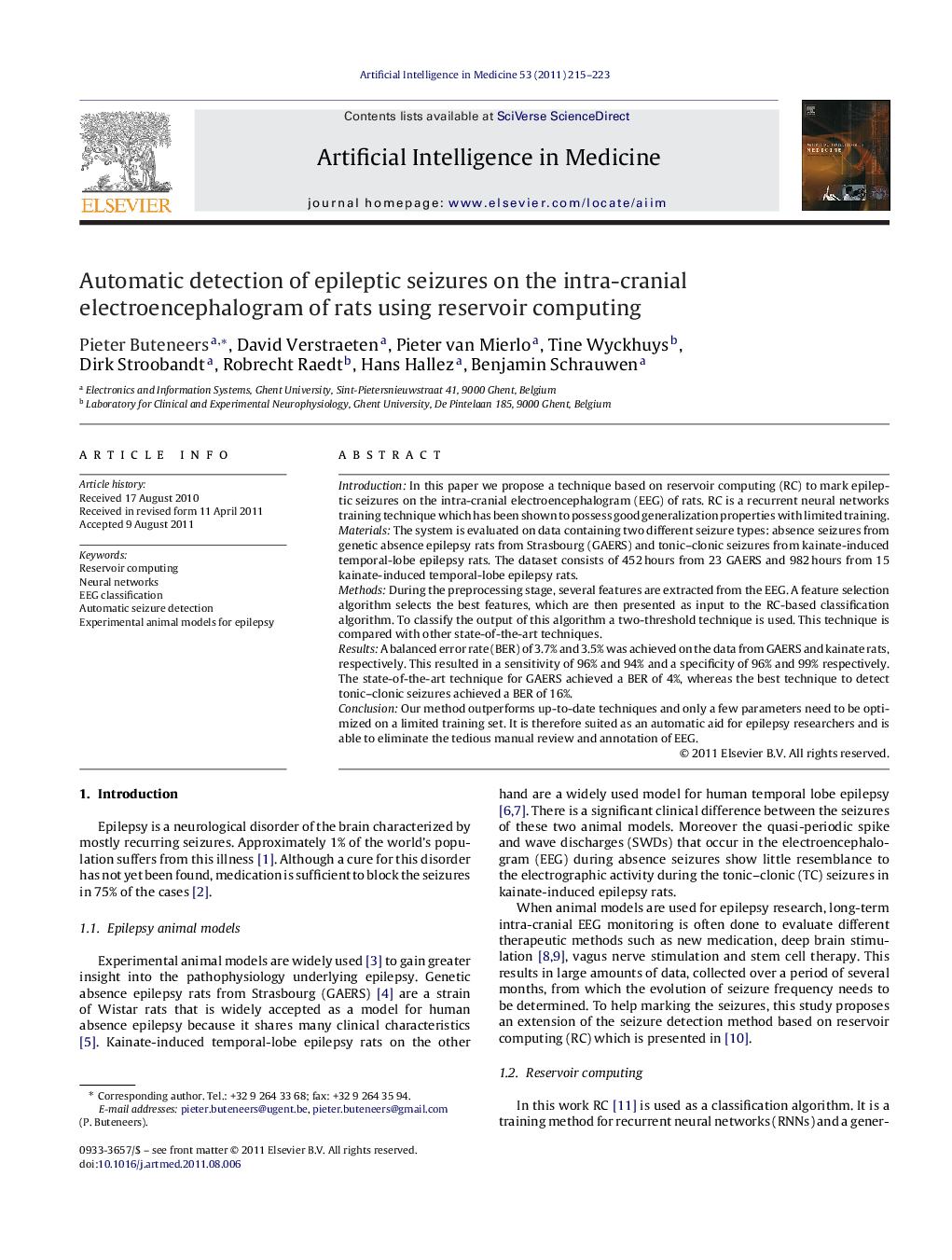| Article ID | Journal | Published Year | Pages | File Type |
|---|---|---|---|---|
| 377772 | Artificial Intelligence in Medicine | 2011 | 9 Pages |
IntroductionIn this paper we propose a technique based on reservoir computing (RC) to mark epileptic seizures on the intra-cranial electroencephalogram (EEG) of rats. RC is a recurrent neural networks training technique which has been shown to possess good generalization properties with limited training.MaterialsThe system is evaluated on data containing two different seizure types: absence seizures from genetic absence epilepsy rats from Strasbourg (GAERS) and tonic–clonic seizures from kainate-induced temporal-lobe epilepsy rats. The dataset consists of 452 hours from 23 GAERS and 982 hours from 15 kainate-induced temporal-lobe epilepsy rats.MethodsDuring the preprocessing stage, several features are extracted from the EEG. A feature selection algorithm selects the best features, which are then presented as input to the RC-based classification algorithm. To classify the output of this algorithm a two-threshold technique is used. This technique is compared with other state-of-the-art techniques.ResultsA balanced error rate (BER) of 3.7% and 3.5% was achieved on the data from GAERS and kainate rats, respectively. This resulted in a sensitivity of 96% and 94% and a specificity of 96% and 99% respectively. The state-of-the-art technique for GAERS achieved a BER of 4%, whereas the best technique to detect tonic–clonic seizures achieved a BER of 16%.ConclusionOur method outperforms up-to-date techniques and only a few parameters need to be optimized on a limited training set. It is therefore suited as an automatic aid for epilepsy researchers and is able to eliminate the tedious manual review and annotation of EEG.
